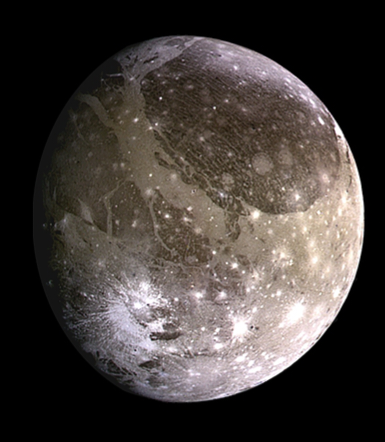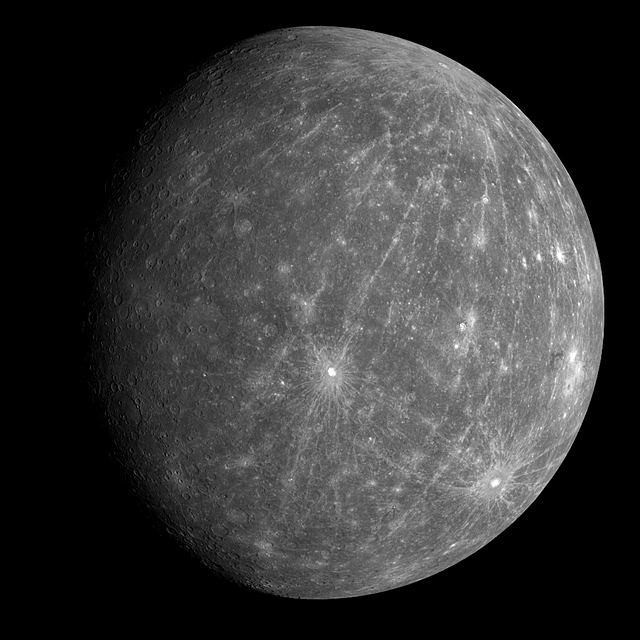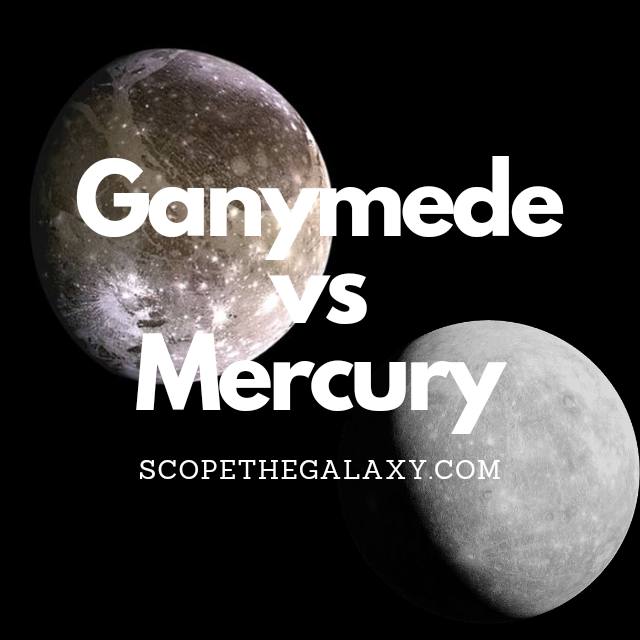*This post may contain affiliate links. This means we may make a commission if you purchase an item using one of our links*
The main differences between Ganymede and Mercury would be that Mercury is an officially recognized planet and is the smallest of the 8 planets whilst Ganymede is the biggest moon in our solar system and larger than Mercury. Nevertheless, Mercury’s density is twice that of Ganymede, meaning it has twice the mass of the natural satellite.
Other than this there are numerous other differences and a lot of similarities too so, continue reading for a more detailed look at each of these celestial beings below.
What Is The Moon Ganymede?
Table of Contents

Ganymede is the largest of the Galilean moons – and the largest moon in our entire solar system – first discovered on 7th January 1610. The surface of this icy world is frozen and covered by two main types of landscape: young, light regions and old, crater-filled terrain. And these darker areas seem to contain a number of organic materials.
Using the Hubble Space Telescope, astronomers have found evidence of an oxygen-based atmosphere. Still, it is far too thin to support any living organisms that we know of. Based on this, it’s unlikely that Ganymede hosts life as we know it.
Estimates place Ganymede at around 4.5 billion years old (the same age as its planet, Jupiter), and its average distance from the Sun is approximately 778 million km.
Its diameter is 5,268km, making it larger than the planet Mercury. Despite this, Ganymede only possesses half the mass of Mercury at 1.48 × 10^23kg, so it is still classified as a low-density object.
Ganymede takes seven days to orbit its planet at an average distance of 665,00km, and the temperature varies from minus 112 to minus 193 degrees Celsius. In regards to the moon’s core temperature, that would be around 1,226 – 1,446 degrees Celsius.
Among the fascinating features of this ice moon is its magnetosphere. While many planets possess a magnetosphere, no other moon in our solar system shares this trait.
Measuring the changes in the magnetic fields of Ganymede and Jupiter allowed scientists to predict that salt water lies beneath the surface of this freezing world.
However, this is insufficient to support life when you factor in the other elements of this giant moon. In contrast to Europa, the rocky layer of Ganymede is not directly below the ocean, so life would have a difficult time forming both above and below the ice.
In addition, the thick layer of ice on the moon’s surface would make internal, water-based life challenging for scientists to detect.
What Is The Planet Mercury?

Mercury is the planet closest to our Sun and would fall under the terrestrial planet moniker. Out of the 8 main line planets Mercury is also the smallest, coming in at 4,879km.
This planet is known for having its fair share of craters, which is mostly down to its thinner non protective atmosphere that is unable to stop interstellar debris from striking its surface.
Despite its close proximity to the Sun, Mercury is not the hottest planet in our solar system but, it does come in second, just behind Venus. It’s surface temperature is around 430 degrees on the upper end with the average temperature around 167 degrees Celsius whereas its core is far hotter at around 1,600 – 3,000 degrees Celsius.
Due to it close proximity to our local star, Mercury is unable to sustain a moon around its orbit and even has a very unique rotation around the Sun where it has 3:2 orbital resonance with the Sun.
As for how long it takes for the planet to rotate around our yellow dwarf star, its the shortest time period of 88 days for obvious reasons, whilst a single day on the planet takes 58.65 Earth days to complete. Its axial tilt is only 2 degrees to the right, making it amongst the straightest planets in the solar system too.
Similarities Between Ganymede And Mercury
Mercury and Ganymede do share a few similarities, some of which include the following:
- Both have a hotter central core.
- Both have a rocky, terrestrial surface.
- Both are spherical in shape.
- Neither have rings surrounding them.
- Both are part of the same solar system.
- Both entities have a magnetosphere.
- Neither have other celestial bodies orbiting them.
- Both have a very thin to non-existent atmosphere.
Differences Between Ganymede And Mercury
In regards to the differences between the two, they include the following:
- Ganymede is the largest moon in our solar system with a diameter of 5,268km whilst Mercury is smaller even though it is a planet, with a diameter of 4,879km.
- A day on Mercury takes 58.65 days whilst a Ganymede day is 7 days and 3 hours.
- It takes Mercury 88 days to orbit the Sun whilst Ganymede orbits the Sun in 12 years and Jupiter in 7 days and 3 hours.
- Mercury orbits the Sun in a circular pattern whilst Ganymede orbits Jupiter in an elliptical pattern.
- Ganymede is tidally locked to Jupiter whilst Mercury is locked in a 3:2 orbital resonance with the Sun.
- Mercury is far hotter with an average temperature of around 167 degrees Celsius whilst Ganymede’s average is between -112 to -193 degrees Celsius.
- In regards to their core temperatures, Mercury’s is between 1,600 – 3,000 degrees Celsius whilst Ganymede’s is between 1,226 – 1,4226 degrees Celsius.
- Ganymede’s gravitational strength is 1.428 m/s² whilst Mercury’s is 3.7 m/s².
- In regards to density, Mercury’s is 5.43 g/cm³ whilst Ganymede’s is 1.94 g/cm³
- Ganymede has a mass of 1.48 × 10^23kg whilst Mercury’s mass is 3.285 × 10^23 kg.
Summary
Mercury and Ganymede are similar in a variety of ways whether it be in regards to their general composition, the lack of other natural satellites orbiting them, their thin atmospheres among others.
Despite these similarities, they differ even more so, whether it be in regards to their mass, density, gravity, overall size, orbital resonance, and more even if they do look similar in appearance. Overall, the manner in which they function within the solar system is very different from one another.

